
Основы белковой хроматографии
.pdf
Chromatography Basics
Presenter: Ilya Grigoryev, Chromatography Product Specialist Author: Jerzy Jankowski – NGC Business Development Manager
Contact information:
+7(985)182-44-39, ilya_grigoriev@bio-rad.com

Agenda
Chromatography definition and history of invention
Chromatography principles
Biological targets of purification
Separations methods overwiev
Chrom Applications for Protein purification
Life Science Group I Chromatography
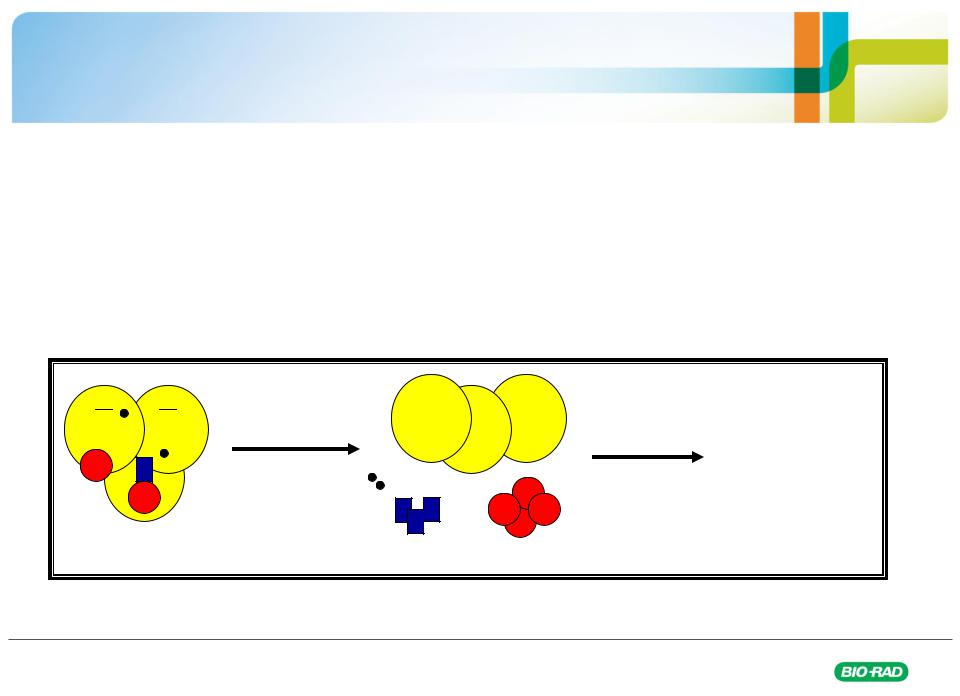
Chromatography – the definition
WORD:
Derived from the Greek word “Chroma” meaning colour and “graphy” means writing.
TERM:
Chromatography is a technique for separating mixtures into their components in order to analyze, identify, purify, and/or quantify the mixture or components. The separation is based on differential partitioning between the mobile and stationary phases.




 Separate
Separate
•Analyze
•Identify
•Purify
Mixture |
Components |
• Quantify |
|
Liquid Chromatography (LC) is a separation technique in which the mobile phase is liquid and the stationary phase is solid.
Life Science Group I Chromatography

Invention of chromatography
Michail Semyonovich Tswett invented the chromatography in 1903 at Warsaw University during his research on plant pigments.
He used the technique to separate various plant pigments such as chlorophyll, xanthophylls, carotenoids.
Michail Tswett Russian botanist 1872-1919
Life Science Group I Chromatography

Invention of chromatography
Life Science Group I Chromatography
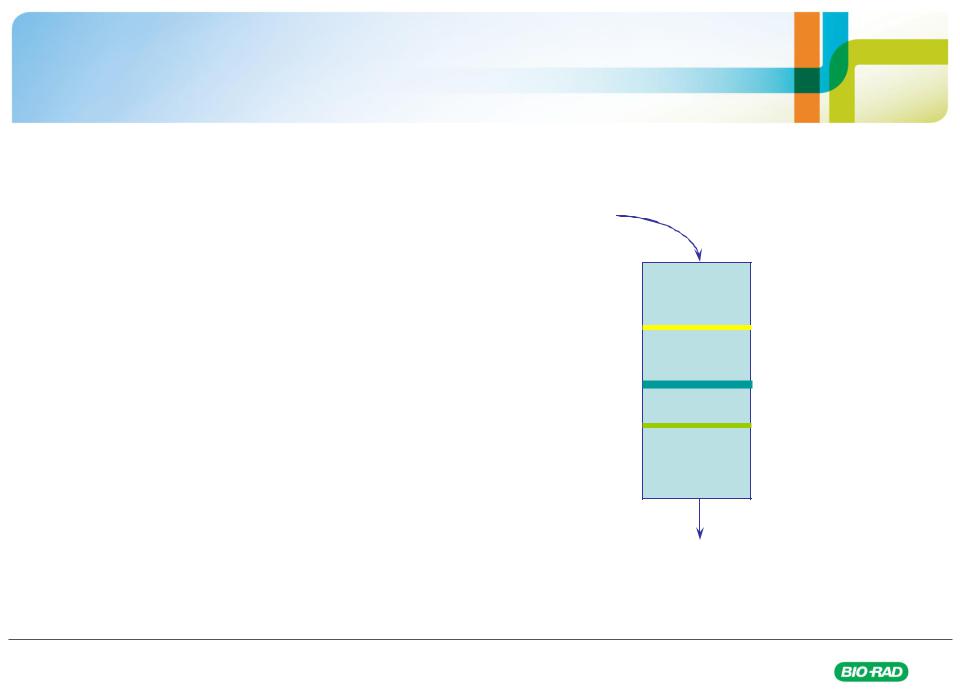
Liquid Chromatography Workflow
Five Easy Steps
1.Equilibrate Column
2.Load Sample
3.Wash off contaminants
4.Elute target compound
5.Regenerate column for reuse
Sample in
|
Column |
|
packed with |
Separation |
Chromatography |
media
Separated components out
Life Science Group I Chromatography

Modern Liquid Chromatography System Design
Chromatogram
|
Syringe |
Pump |
C |
|
o |
|
l |
|
u |
|
m |
|
n |
Sample |
Sample loop |
Detectors |
|
injection |
|||
|
UV, conductometric, and |
||
valve |
|
||
|
others |
||
|
|
Fraction
Collector
Life Science Group I Chromatography
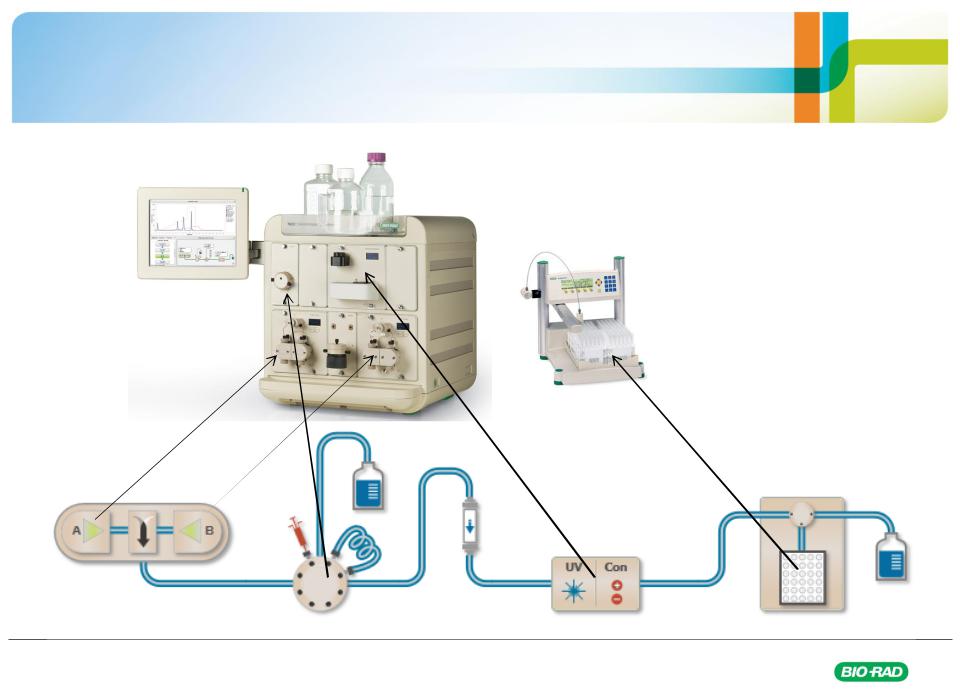
NGC – Medium Pressure Chromatography System
Life Science Group I Chromatography
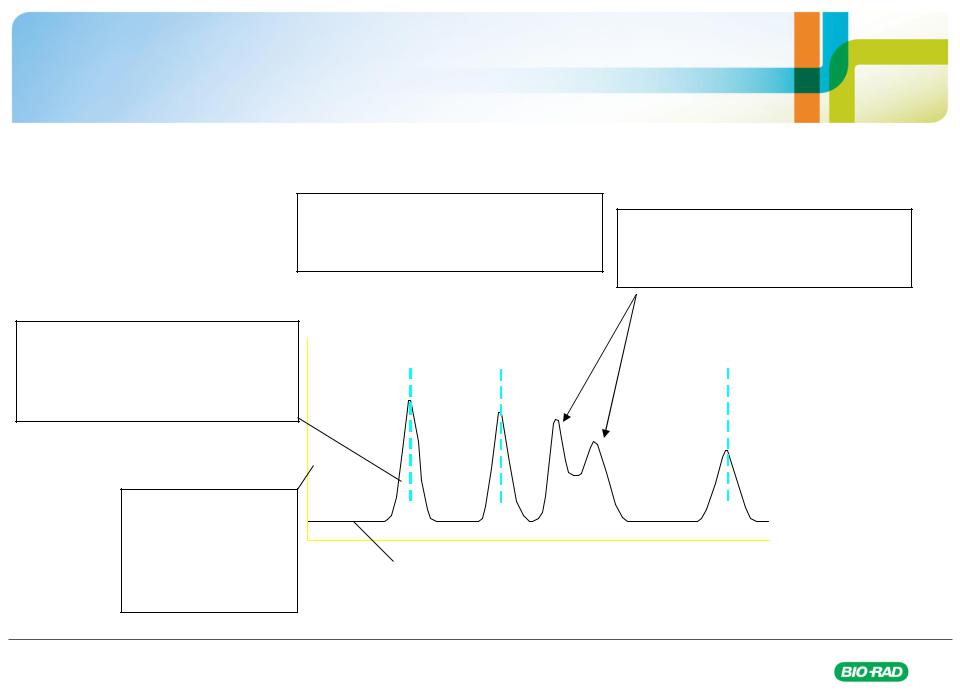
The Chromatogram – detector visual output
Baseline separation, good resolution, the peaks are completely separated, best case
These Peaks are not separated so well. They are broad
and run into each other
First Peak, the void peak, Goes straight the column Without interacting with it.
This is the unbound material
Amount of protein, as read by a UV monitor, is usually on the y-axis
Vo |
Ve |
Vt |
Baseline |
Volume |
Time or volume are always |
|
|
On the x-axis |
|
||
|
|
|
Life Science Group I Chromatography
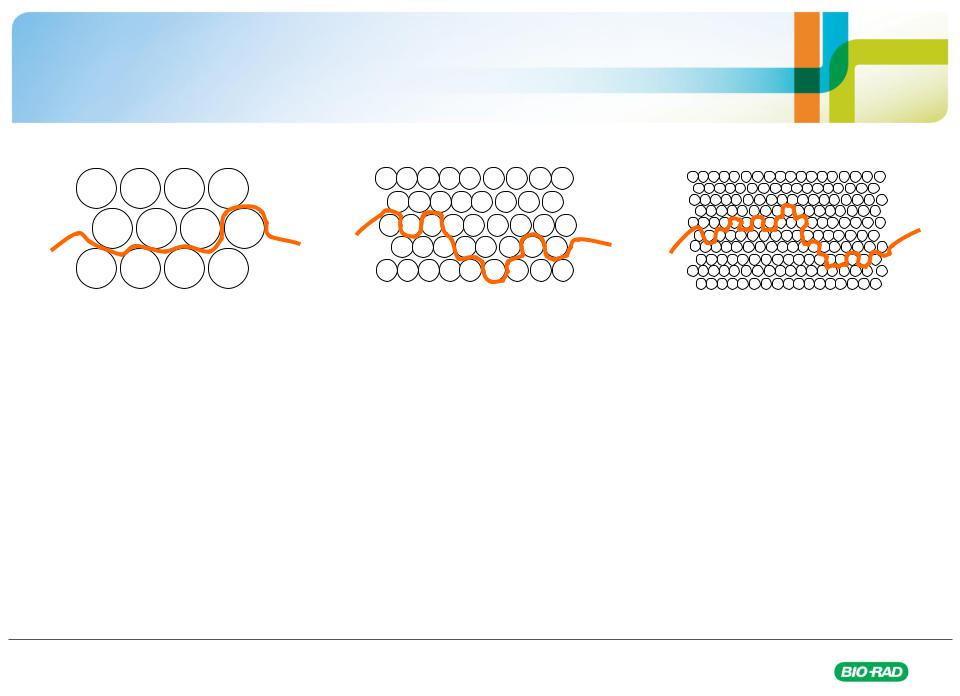
Solid phase particle sizes & resolution
|
|
|
|
|
|
|
|
|
|
|
|
|
|
|
Large beads : ~ 50 µm |
Medium beads : 10 - 15 µm |
|
Small beads : 3 - 5 µm |
|
|
|
Low Pressure : |
|
Medium Pressure : |
|
High Pressure : |
|
< 0.15 MPa, 1.5 bar, 22 psi |
|
< 2 MPa, 20 bar, 290 psi |
|
< 10 MPa, 100 bar, 1450 psi |
||
|
(atmospheric) |
|
|
|
|
|
|
Low resolution |
|
Medium resolution |
|
High resolution |
|
Life Science Group I Chromatography
